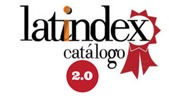Interaction patterns in web and mobile applications in FACCI students
Investigation article
Keywords:
web applications, mobile, FACCI, computing, patterns, interactionAbstract
In Ecuador there are few research topics about the use of interaction patterns. Consequently, developers have not used them and need to recognize the characteristics of these new tools for interaction of web and mobile systems, both accessible and usable. The objective of this research is due to the fact that the Faculty of Computer Science (FACCI) of the Universidad Laica Eloy Alfaro de Manabí (ULEAM) has been able to determine that there is little use of standards that provide a solution to the design of user interfaces, due to little research on the part of student software developers in this academic unit. The methodology of this work is descriptive and applied. A documentary analysis is used based on the review of various types of articles and texts that have solid theoretical foundations. There is a lack of knowledge on the part of students regarding Interaction Pattern Design Modeling, which is why it is not very innovative when designing UIs in web and mobile applications.
Keywords: web applications, mobile, FACCI, computing, patterns, interaction.
Downloads
References
Asamblea Nacional. (Septiembre de 2012). Ley Organica de Discapacidades. https://goo.gl/LhW165
Bawman, G., Barrera, H., Rochín, J., & Esquer, S. (2010). Métodos de Investigación. Hermosillo.
Brambilla, M., Mauri, A., & Umuhoza, E. (2015). Extending the Interaction Flow Modeling Language (IFML) for Model Driven Development of Mobile Applications Front End. Researchgate, 16.
Branbilla, M., & Butti, S. (Septiembre de 2014). Quince años de desarrollo industrial model-driven de aplicaciones front-end: desde webml hasta webratio e IFML. DBGroup: https://goo.gl/9ppdn2
Bruno, M. (24 de Octubre de 2011). WebRatio Projects. https://goo.gl/ds1bDZ
Cuevas, S. (23 de Agosto de 2015). Slideshare. https://goo.gl/DXXaD3
Garcia, R. (Enero de 2012). Gitbooks. https://goo.gl/kf9FrZ
Lozada, J. (2014). Investigación Aplicada: Definición, Propiedad Intelectual e Industria. Centro de Investigación en Mecatrónica y Sistemas Interactivos, 6.
Mejia Jervis, T. (17 de Octubre de 2017). Lifeder. https://goo.gl/pFzJdx
Morán, G., & Alvarado, D. (2010). Métodos de Investigación. Pearson Educación.
OMG. (5 de febrero de 2015). Object Management Group. https://goo.gl/Bvw78t
Paz Guillermina, B. (2014). Metodología de la investigación. Grupo Editorial Patria.
Rossi, G. (Agosto de 2013). IEEE Computer Society. https://goo.gl/hspiJ7
Rubio Liniers, M. C. (2004). El análisis documental: indización y resumen. CINDOC-CSIC, 13.
Salkind, N. J., Escalona, R. L., & Salmerón, V. V. (1998). Métodos de investigación. Prentice Hall.
Silva, M. (5 de Junio de 2013). Webinar IFML en Español. https://goo.gl/sDNTLg
W3C. (Octubre de 2017). Accessibility. https://goo.gl/pFr4fR
WebRatio. (25 de Julio de 2017). WebRatio Enterprise Platform: https://goo.gl/gL9SeF
Published
How to Cite
Issue
Section
License
Copyright (c) 2020 Scientific Journal of Informatics ENCRYPT

This work is licensed under a Creative Commons Attribution-NonCommercial-ShareAlike 4.0 International License.















